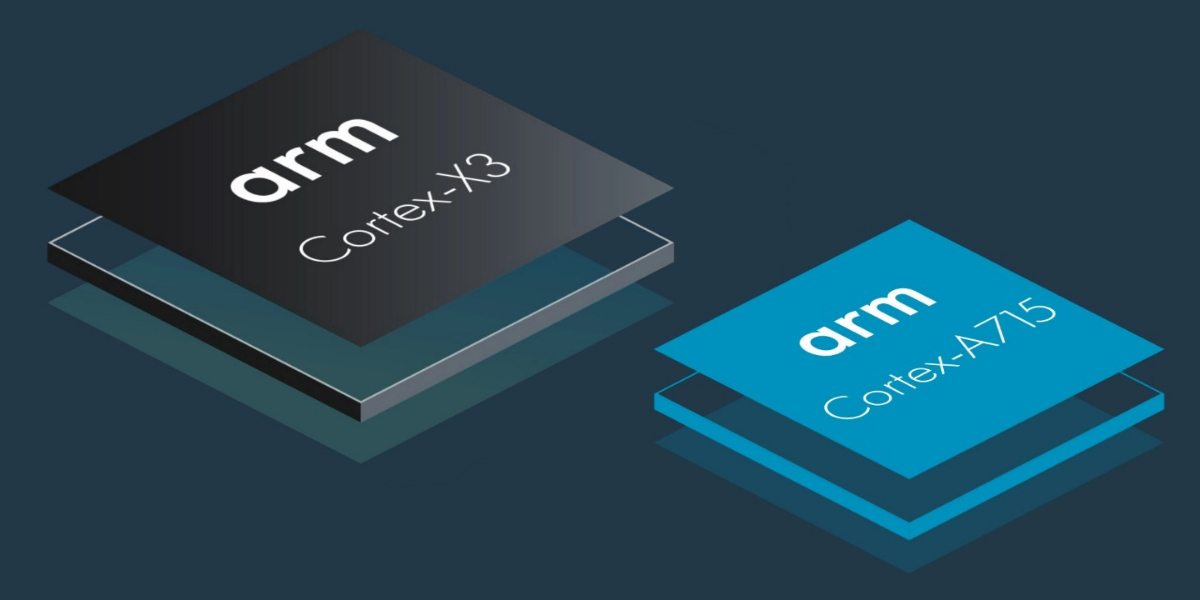ARM reveals Cortex-X3 & Cortex-A715

ARM reveals Cortex-X3 & Cortex-A715. (Credits: Google)
- The Cortex-X3 and A715 are the second generation of ARMv9 CPU cores.
- New core will provide a 25% performance increase over the top Android chipsets.
- Existing flagship chips’ 1+3+4 and 1+4+4 designs will still be viable options.
The Cortex-X3 and A715, which are the second generation of ARMv9 CPU cores, have just been introduced by the parent firm.
Additionally, the little A510 core had a minor improvement. Increased performance, better efficiency, and new, more potent configurations will all be made possible by the new architecture.
Read More: MTK Dimensity 2000 to be built on 4nm node and will use ARM V9 arch
Starting with the Cortex-X3, please. This is the third consecutive year of double-digit IPC growth, according to ARM (Instructions Per Cycle, i.e. how much the CPU can do at a set clock speed).
The X-core is geared for maximum performance, just like its forerunners.
The new core will provide a 25% performance increase over the top Android chipsets available today (which employ the Cortex-X2) (a mean of the improvements shown on Geekbench 5 and two SPECint tests).
The anticipated benefits will be 34% for Windows on ARM architectures, which trail behind smartphone chips significantly.
ARM has completed its transition away from 32-bit processors with the new Cortex-A715 core (as far as smartphones are concerned).
Read More: Which differences important between the Exynos 2200 and Snapdragon 8 gen 1 processors?
The technical team was able to reduce the hardware for the instruction decoder by a factor of 4.
ARM had additional time to work on and enhance the X3 design to better meet the ARMv9 instruction set, even though the X2 was already a 64-bit only core (which the company says is more predictable and regular than ARMv8).
Going back to the A715, it uses 20% less power while maintaining the same performance as the A710.
Alternatively, it can provide 5% better performance while using the same amount of electricity (this is assuming the cores are fabbed on the same node).
There is no new tiny core, but by making a few changes, ARM was able to increase the Cortex-power A510’s efficiency by 5% over its 2021 iteration.
Zooming out from the core level, let’s examine the entire chipset. The DynamIQ Shared Unit technology from ARM has been modified to support up to 12-core CPUs with 16MB of L3 cache.
Also, take note of the design’s composition: the most potent models will have no less than 8 Cortex-X3 and 4 Cortex-A715 cores.
Read More: MediaTek Dimensity 1300T to be Released on July 26, Specs Revealed
The existing flagship chips’ 1+3+4 and 1+4+4 and 2+2+4 designs will still be viable options.
Clients of ARM (Qualcomm, Samsung, and MediaTek) will be able to develop chips that completely suit a specific performance and power envelop as a result.
Read More News On
Catch all the Business News, Breaking News Event and Latest News Updates on The BOL News
Download The BOL News App to get the Daily News Update & Live News.